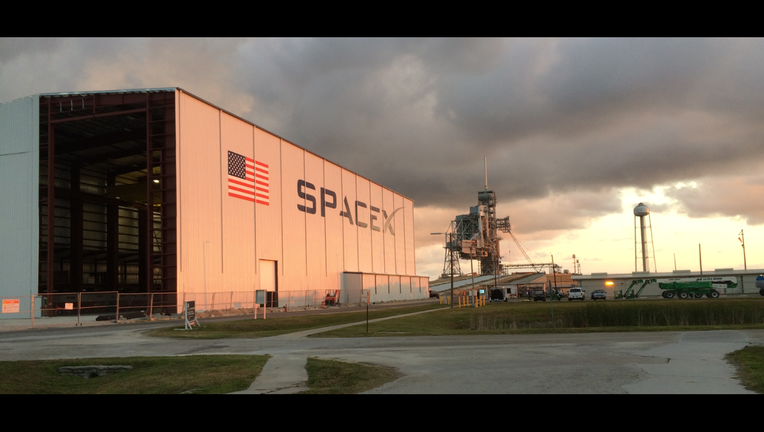SpaceX launches futuristic pop-up room, lands rocket at sea

HAWTHORNE (CNS / FOX 11) - Hawthorne-based SpaceX made history again Friday when it successfully launched a spacecraft carrying supplies to the International Space Station, then recovered the expensive rocket that propelled the ship into orbit on a floating barge in the Atlantic Ocean.
The resupply mission from Cape Canaveral, Florida, is the first for SpaceX since last June, when one of the company's rockets exploded about two minutes after takeoff, destroying the rocket and the supply-filled Dragon
spacecraft.
That failure made today's historic success even sweeter for founder Elon Musk's aerospace company. Not only did the Falcon 9 rocket successfully propel a Dragon spacecraft into space, but the company maneuvered the rocket back to Earth and -- for the first time after a series of failures -- carefully landed it upright on a "droneship'' known affectionately as "Of Course I Still Love You.''
When the rocket touched down upright on the barge, which swayed gently on Atlantic Ocean waves, deafening cheers arose at SpaceX's Hawthorne headquarters, where hundreds of workers watched the mission on giant screens.
Landing from the chase plane
Last December, SpaceX became the first company to return a rocket to Earth and set it down upright on land. That Dec. 21 launch, also from Cape Canaveral, delivered 11 ORBCOMM communications satellites into orbit. After delivering the vehicle carrying the satellites, the rocket was maneuvered back to Earth, and it successfully landed on a pad back at Cape Canaveral.
The landing was a major cost-saving step forward for space operations, proving that highly expensive rockets can be recovered and reused instead of merely being lost in the ocean.
Landing the Falcon 9 on a floating barge, considered to be a safer option than landing on Earth, is another major advancement in rocket-recovery.
Meanwhile, the CRS-8 Dragon Resupply Mission is on its way to the International Space Station. The ship is carrying 7,000 pounds of supplies, including a 3,100-pound Bigelow Expandable Activity Module -- an experimental space habitat that attaches to the station in an effort to expand habitable space.
The cargo also includes specimens of the fungus Aspergillus nidulans, which will be studied in the high-radiation, micro-gravity conditions aboard the space station.
Scientists from USC and NASA's Jet Propulsion Laboratory said the experiments represent the first time fungi have been sent into space for the purpose of developing new medicine. Molecules from Aspergillus nidulans
potentially may be useful in anti-cancer and Alzheimer's disease research, USC announced earlier.
Other cargo aboard the Dragon spacecraft are experiments relating to muscle atrophy and bone loss in space and the interactions of particle flows at the nanoscale level, according to NASA.
The Dragon spacecraft is expected to reach the International Space Station around 4 a.m. Sunday. The craft is scheduled to return to Earth May 11, splashing down in the Pacific Ocean off the coast of Baja California.
Copyright 2016 FOX 11 Los Angeles: Download our mobile app for breaking news alerts or to watch FOX 11 News | Follow us on Facebook, Twitter, Instagram, and YouTube. Be a citizen journalist for FOX 11 and get paid - download the Fresco News App today.

